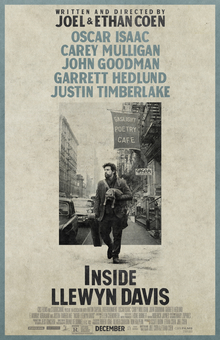 Director: George Clooney
Director: George ClooneyGenre: Historical Drama
Starring: George Clooney, Matt Damon, Bill Murray, John Goodman, Jean Dujardin, Cate Blanchett, Hugh Bonneville
Distributed by: Sony Pictures/20th Century Fox
Release Date: February 7, 2014
My Rating: 8/10
George Clooney directs, co-writes (with Argo producer Grant Heslov), and stars in this incredible film that tells the true story of seven art experts, led by New York-based art conservation specialist and Lieutenant Frank Stokes (Clooney), based on art specialist/museum director George L. Stout. After receiving a signed and approved copy by President Franklin Roosevelt, Stokes goes on to recruit six artists, directors, and curators in order to retrieve a vast collection of ancient art masterpieces that have been stolen by Hitler and the Nazis in an attempt to erase all evidence of the talent that existed before and leading up to the Second World War. First, he contacts Metropolitan Museum curator James Granger (Damon), and subsequently goes on to recruit many others, including a sculptor and teacher named Walter Garfield (Goodman), a frenchman named Jean-Claude Clermont (Dujardin) and a Brit named Donald Jeffries (Bonneville). The men split up into pairs in order to divide and conquer and begin a trek across Europe to recover the lost paintings and sculptures from prized artists like Pierre-Auguste Renoir, Paul Cezanne, and Michelangelo. With the help of a young bilingual German man named Sam (Dmitri Leonidas)-based on real-life monument man Henry Ettlinger, who is still alive today-the men track down each of the lost pieces one by one, despite being blocked at numerous instances by both the Germans and the Russians among many others.
The film is beautifully well-written, and contains a surprising number of doses of humor considering that it is still a drama (many of them regarding Matt Damon's cringe-worthy French-speaking skills). Although there are several scenes that come off as very exaggerated and glorified-typical of a Hollywood movie of this caliber-and very few visceral scenes depicting the horror that prevailed in Europe during the Nazi occupation, there is no denying that the all-star cast headed by Clooney are phenomenal. They all manage to astoundingly capture the determination of these men to go to great lengths and risk their lives not only for the lives of others, but for the great works created by renown painters and sculptors of the past. There are a few scenes, particularly those showing the battles and encounters with the Germans, that are rife with tension and suspense.
Cate Blanchett delivers a particularly noteworthy performance as Claire Simone (based on Rose Valland), a strong and courageous Parisian art curator who helps the monuments men locate the art, especially after learning that one of her relatives comes close to getting arrested by the Gestapo.
There is some speculation that the main reason behind Hitler's determination to render all of these masterpieces obsolete was that he himself was a failed artist, who was prepared to do anything to ensure that all of these artifacts were removed from history. Of course, there is no concrete evidence to support this claim, but it could very well reflect the madness and ruthlessness that is associated with the Austrian dictator. One thing I was left wishing the film had gone into more detail about was the magnitude of the consequences suffered by the Nazis who committed such atrocities by burning down all of the art pieces and were tried for their crimes.
What I found interesting about the film, nonetheless, and what made it different from many other war movies was the fact that at one point well into the war, George Clooney's character makes clear to the men that Hitler must not be allowed to die, otherwise the Nazis will destroy all of the artwork as soon as possible as revenge for the death of their Fuhrer.



